 By: Mohammad Anwar Rahimi
By: Mohammad Anwar Rahimi
Points to Consider:
It is necessary to pay attention to and consider the following points deeply when contemplating the following events and their historical relationships, from the perspective of historical sensitivity and reflection:
First, as you will see, the following reports have been prepared directly from the voices of the victims themselves, eyewitnesses, and local sources; therefore, we are directly confronted with the naked and bloody body of this tragedy. Secondly, none of the crimes, violation of rights, and devastations against the defenseless Hazara people by the Taliban regime have been examined or legally and judicially decided upon in any court, based on civil and religious laws, and with attention to documents, records, and evidence – just like the fate of the massacres and suicides in Kabul during the republic era, they have been practically and openly suppressed and forgotten. Thirdly, the incidents and crimes appear to be very arbitrary, unrestrained, and intensely vengeful; however, the chain of violence clearly indicates a systematic action, conscious will, and deliberate intent behind it in the core of the Taliban’s power. The repetition of crimes, the support of government and security officials for the criminals, the lack of legal and judicial follow-up for the incidents, or the feigned attempts at reconciliation and forgetting the incidents under false and threatening pretexts, all conclusively prove the existence of a systematic will in the central core of the Taliban terrorist regime. But if we ask about the historical relationships of the crime, we must say: Firstly, these crimes and devastations are exactly in line with the crimes of Abdur Rahman, with the same motives, in the same manner and appearance, and in the same horizon. Therefore, they are not just crimes; rather, with certainty, we must say they are criminal policies; they are not a series of incidents but links in a decision.
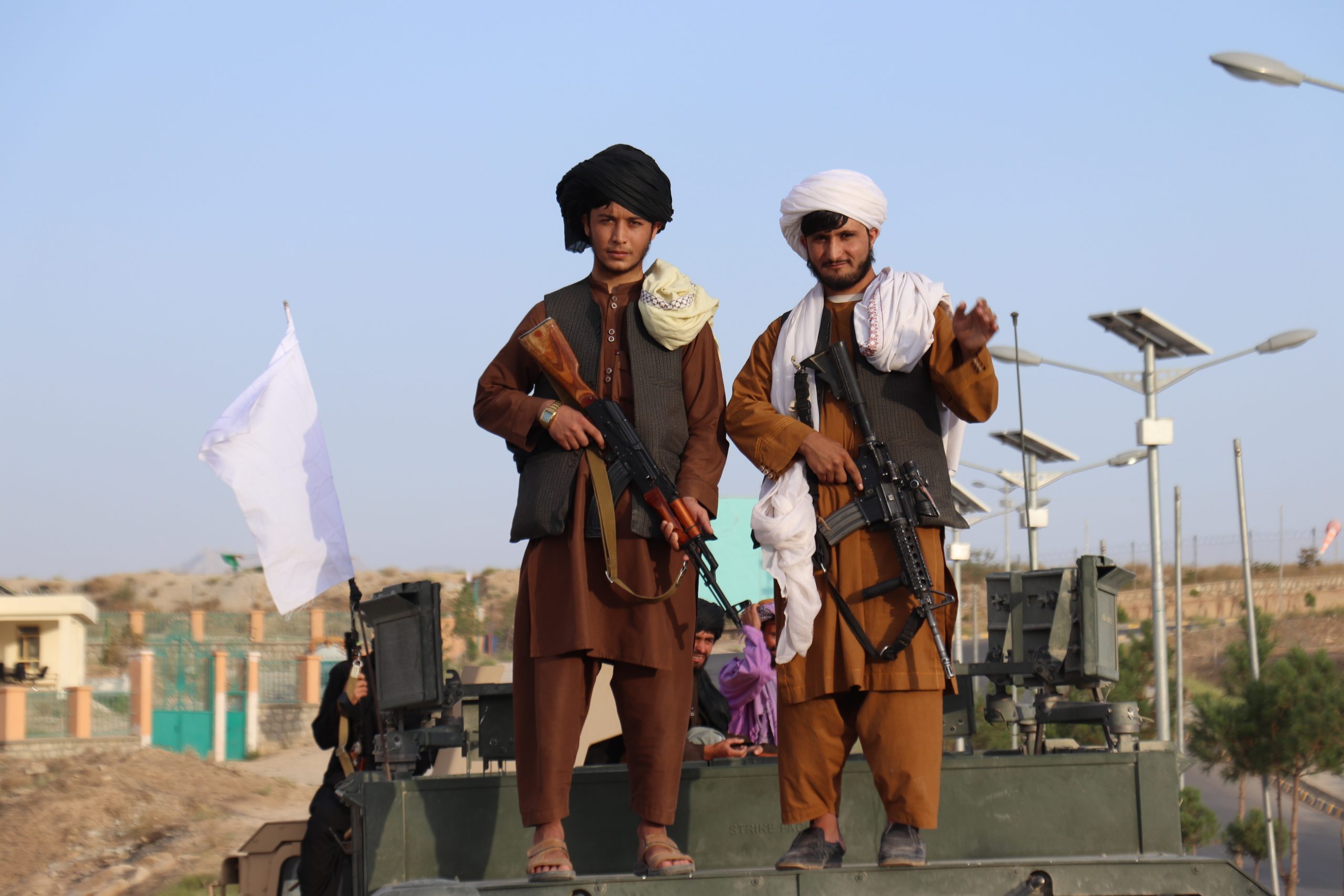
Second, these crimes fall under the categories of genocide, land grabbing, and forced displacement. The goal of all these actions is the eradication of historical, cultural, religious, linguistic, political, and physical/geographical aspects. Third, and for this reason, there is a racist mindset and belief at the foundation of these crimes, which has been nurtured by criminal acts and has reached maturity through genocide, land grabbing, and forced displacement.
Fourth, all these crimes occur in the absence of law and the complete lack of social justice, and there is no bilateral give-and-take between the people and the government; on one side there is power, pressure, and threat, and on the other, absolute submission and obedience. The Taliban terrorist regime not only lacks a constitution and is incapable of drafting one, but also does not have any specific and definite civil and criminal laws. Consequently, it is the arbitrary will of the military, security commanders, governors, and intelligence personnel that they rule over the people in an unrestrained and one-sided manner.
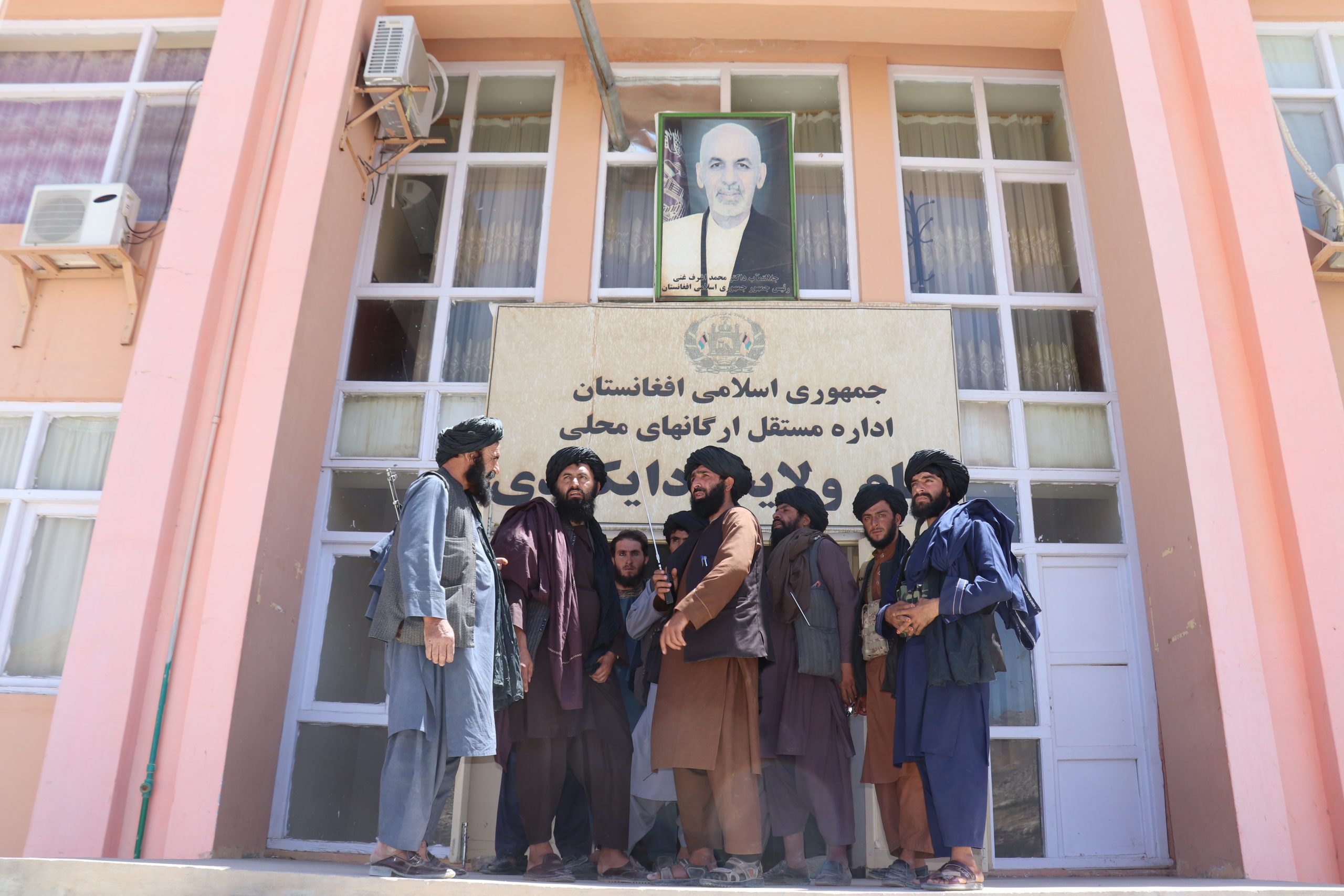
Fifth, the greatest danger threatening the lives, property, honor, lands, assets, freedom, rights, and future of the Afghan people, and which will crush and grind them in the belly of the disaster, is the “legitimacy” and international recognition of the Taliban terrorist regime. The legitimacy of the Taliban will be the biggest mistake of the international community. If the Doha Agreement and the overthrow of the republic by the international community, especially the United States, has been a betrayal, the legitimacy of the Taliban will be an evident crime.
In conclusion, these crimes, and devastations, on a large and small scale and with all the relationships that have been explained, will continue as a policy. The question facing the victims is not about saving the past, but about saving the future.
In the Sorrow of a Massacre!
Many provinces had been evacuated by the defense forces and fell into the hands of the Taliban terrorist regime without any defense or war. Therefore, Bamiyan, Daikundi, and one or two other provinces were the most authentic and the last geographies of the republic that had no fate other than collapse and surrender. After the fall of Bamiyan to the Taliban in the summer of 1400 (2021), the residents of Daikundi province forced the security forces of this province to refrain from fighting against this group to prevent massacre, invasion, and destruction, especially the killing of civilians. Finally, the security-defense forces, leaving behind all military tools and equipment, left Nili, the capital of Daikundi, on July 16, 2021 (25th of Asad 1400), and following that, the Taliban fighters entered the city without any engagement and took control of all military bases and administrative centers.

The Taliban terrorist group, in their first action after taking control of Afghanistan, declared a general amnesty on July 15, 2021 (24th of Asad 1400). In the amnesty announcement, it was stated: “All employees of the former government can return to their jobs.” Following the announcement of the Taliban’s general amnesty, some lower-ranking soldiers and employees of the previous government who had not left their workplace until the arrival of the Taliban to prevent mischief, self-will, and the military and administrative equipment from falling into the hands of criminals, returned to their workplaces. Despite adhering to the provisions of general amnesty, the Taliban severely pressured and tortured the former government soldiers in makeshift courts, without law and legal procedures, on the pretext of missing weapons and military equipment.
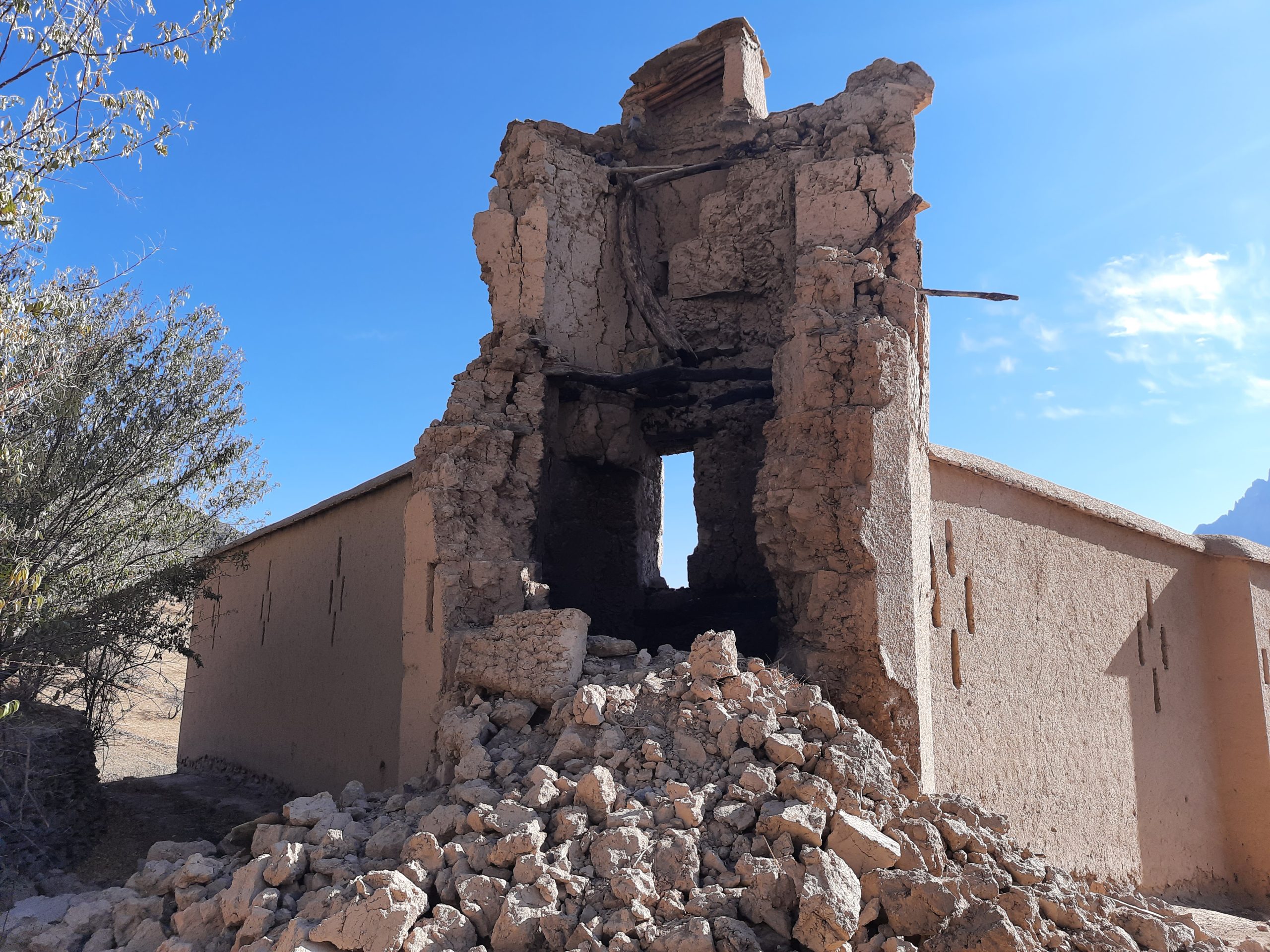
They even arrested one of the Hazara Talib with all his forces under his command and imprisoned him for several months to make him understand that the real Taliban could only be of Pashtun origin.
The people of Daikundi soon realized that the general amnesty was, in fact, a deceptive slogan to trap the military forces of the previous regime. In those days, local sources reported that the Taliban’s military commander and newly-appointed governor for Daikundi were very upset that they had no legitimate reason for massacring the people upon their entry into Daikundi.
Based on reports from local sources, they had openly told the people: “We expected the people of Daikundi to resist us, but you surrendered without any engagement. If you had fought, we would have massacred you; but unfortunately, that didn’t happen. Now we don’t know what excuse to find to slaughter you!”
They also said that they had been waiting for years to massacre the Hazaras and had come to Daikundi to fight the Hazaras: “We came here to fight the Hazaras. Where there is no war, we cannot enjoy ourselves, now let’s see when we reach our goal.” This statement recalls the nature of the Pashtuns according to the research: Pashtuns are born with bloodstained teeth and forks.
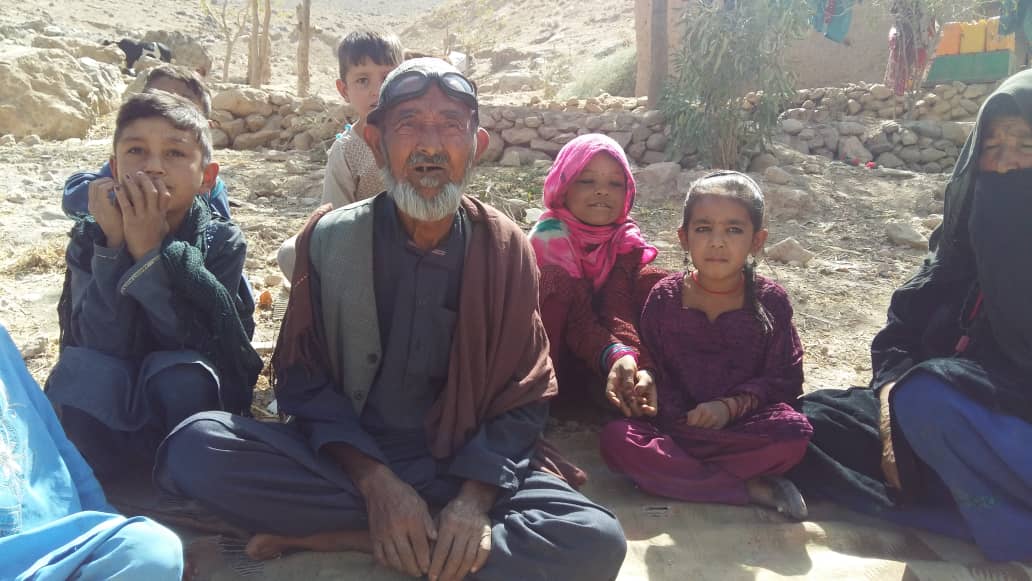
On the other hand, the Taliban forces in Daikundi were not subject to any specific or codified law, and did not follow a single leadership; each Taliban military faction was loyal to one of the leaders of this ethnic group, and the Taliban leaders also had different opinions on how to deal with the people. The unpredictable and bloodless takeover of Afghanistan by the Taliban caught them off guard. They took power in a state where they did not recognize the human rights of Afghan citizens and considered violent treatment of non-Pashtun citizens as their inherent right.

In addition to all this, in the eyes of the Taliban, all non-Pashtun citizens were considered foreign mercenaries due to their support for the republic regime; a delusion that inevitably made the Hazaras vulnerable. Throughout the two decades of war and suicide against the republic, the Taliban soldiers were indoctrinated that the Hazaras were polytheists and killing polytheists had priority over killing infidels. On the other hand, some of the Taliban forces harbored strong resentment against the Hazaras due to the stubborn resistance of the people and security forces of Daikundi against the Taliban and were counting the moments to take revenge.
As expected, the Taliban forces began harassing and abusing the residents of Daikundi in the first few days of their control, under the pretext of disarming former soldiers and conducting nightly inspections of homes. This provocative behavior occurred even though the soldiers of the former government had handed over all their weapons, including military equipment and administrative facilities, to the Taliban forces. Nevertheless, the Taliban did not refrain from torturing and killing them, resulting in many security forces and employees of the former government’s civil service departments fled to Iran and Pakistan.
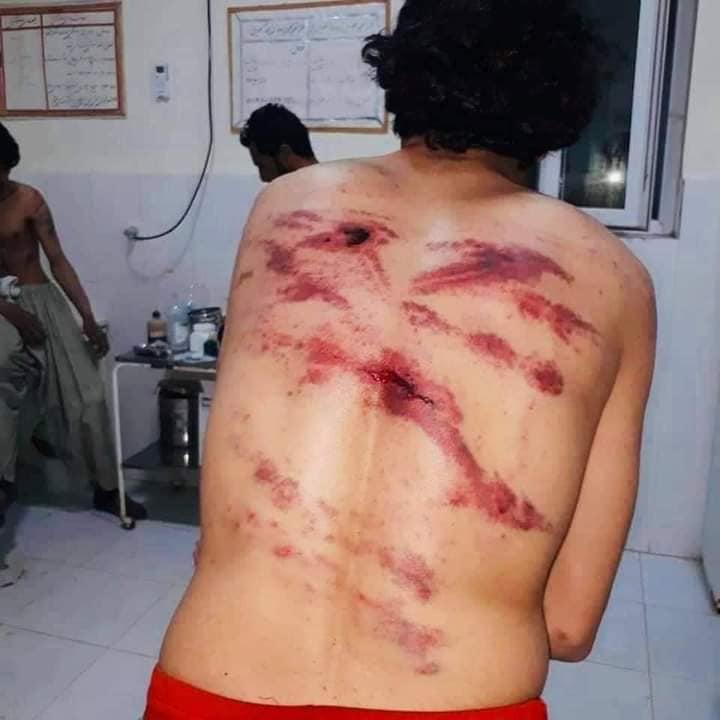
Several weeks after the Taliban’s takeover of Daikundi, not only they did not stop harassing and abusing the people but also used various methods to provoke the people to achieve their predetermined goals. In general, the Taliban’s main motivation for violence against the people of Daikundi can be categorized as follows:
1: They provoked the people to create a pretext for a widespread massacre of the Hazaras.
2: They provoked the people to find a pretext for looting their movable assets.
3: They provoked the people to force them to abandon their lands and homes so that the Taliban forces could confiscate them and distribute them among the Pashtuns.
As described above, the general amnesty slogan not only did not materialize in Daikundi, but it was only used as a tool to deceive public opinion, the media, and the international community. To substantiate this claim, we will discuss the tragic events related to forced displacement for the purpose of seizing agricultural lands, the systematic killing of Hazaras, and the ransom and looting of Hazara assets in Daikundi by the Taliban forces.
A: Forced Displacements
To easily seize the agricultural lands and houses of the Hazaras in Daikundi, the Taliban used various tricks and threats to force them to leave their homes. We will address all instances in this report.
2. Land confiscation and forced displacement of Hazaras in Gizab
On October 1, 2021, local sources reported that the Taliban governor in Daykundi ordered the Taliban security commander in the “Pato” district of the province to evict residents of 15 Hazara-populated villages in Gizab and Pato districts. Following this, the security commander of the Pato district, on September 8, 2021, issued a written order to the residents of Hazara-populated villages of Kharlak and Siah-Ghalja, stating that in accordance with the governor’s decree and the Taliban court, the residents of these villages have 15 days to leave their homes and villages; otherwise, they will not have the right to complain about whatever happens on them. The text of the order for forced displacement is as follows:
The people of Kharlak and Siah-Ghalja are informed that according to the order of the respected governor and the court, we have been ordered to enforce the evacuation. Now, you must evacuate immediately, and if you do not evacuate within fifteen days, we will take action against anything that happens, and you will not have the right to complain.
Following this deadline, Taliban forces attacked the targeted villages and threatened the people to leave their homes within five days:
Respected people of Kharlak and Siah-Ghalja, peace upon you and Allah’s mercy and blessings. From the esteemed district governor and the security commanders, it is informed that within five days, you must surrender the occupied lands to Haji Sharwal and Haji Abdul Qayyum and their associates. You can take all your belongings with you during these five days. If you do not evacuate the land within five days, we will return for the second time, and you will not be able to take anything with you, nor will you have the right to complain.

The local governor of Gizab district set a 15-day deadline on 14th Sunbula 1400 for the elders of several Hazara-inhabited villages to leave their homes; otherwise, they would be responsible for any consequences after the specified date. In the end, the Taliban forcibly displaced thousands of Hazara families from their homes and villages, and did not allow any of the families to take their agricultural products, foodstuffs, or livestock with them. After displacing the Hazara families, the Taliban gave thousands of fertile lands to the Pashtuns. Based on information obtained from local sources by the Jade-Abresham Weekly, the number of households forcibly displaced from 15 villages in the districts of Gizab and Pato and the lands given to Pashtuns by the Taliban are as follows:
1.Kandir: about 400 households, approximately 900 acres of land;
2.Maidan Malek: 100 households, 200 acres of land;
3.Shagholja: 150 households, 400 acres of land;
4.Kharkak: 160 households, 420 acres of land;
5.Bala Joy: 300 households, 700 acres of land;
6.Rah Ramah: 90 households, 270 acres of land;
7.Chepe Joy: 650 households, 1700 acres of land;
8.Dahna Nala: 380 families, 900 acres of land;
9.Mian Qashu: 100 households, 500 acres of land;
10.Sina Khazak: 150 households, 700 acres of land;
11.Kontai: 70 households, 250 acres of land;
12.Syalash: 90 households, 200 acres of land;
13.Tagabdar: 300 households, 400 acres of land;
14.Warg: 50 households, 300 acres of land;
15. Kata Anar: 30 households, 150 acres of land.
Based on the statistics obtained, the Taliban forced more than 3,000 Hazara families to flee from 15 villages and seized and confiscated over 8,000 acres of agricultural land, tens of thousands of animals including cows, sheep, goats, horses, and hundred tons of grain crops like wheat, barley, oats, rice, and significant amounts of legumes and animal feed belonging to the residents of the mentioned villages. The Taliban also set fire to the houses of the displaced in Pato district and completely destroyed them. Although the Taliban’s security commander in Pato district had called these lands “usurped” in an order he issued, but findings of the “Jade-Abresham Weekly” and other credible sources indicate that some Pashtuns had claimed ownership of these lands due to their fertility – most of which are located along the Helmand River. The governor and the Taliban’s security commander, who were very inclined to oppress the Hazara people, immediately set a deadline for the Hazara residents of the 15 villages and forced them to leave their villages.
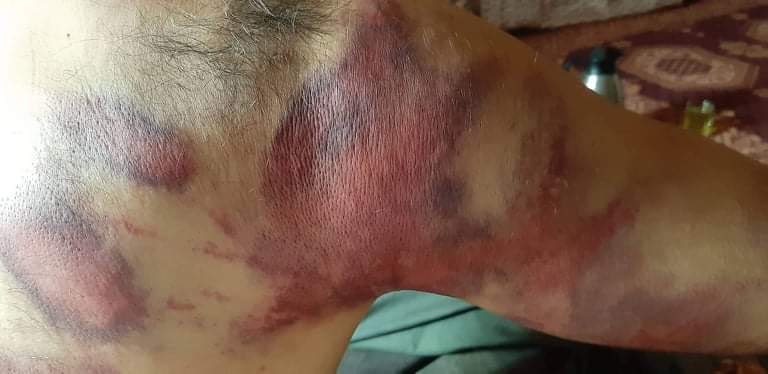
Local sources confirm that when some landowners approached the Pato district office with their legal and religious documents to seek justice, Taliban officials detained and imprisoned them for several days without examining or paying attention to their reasons and documents, accusing them of rebelling against the security commander’s order to quickly leave the villages. A local resident, who did not want his identity to be revealed due to security threats, told the “Jade-Abresham Weekly”: The governor, the security commander, and the district chief were supporting their Pashtun fellows. They did not allow landowners to have their legal and religious documents examined in court. When some of their relatives complained about the Hazara people, they immediately ordered their men to force the Hazaras to migrate as soon as possible and distribute their lands among the Pashtuns.
The source adds that when the Taliban brought the evacuation order, they gave the local residents until the afternoon of the same day to leave, otherwise, they would have no right to complain:
Some landowners went to the district office to show their ownership documents to the commander and the district chief, but the Taliban imprisoned them, and people had now way rather than moving to neighboring villages. The Taliban did not even allow people to take their belongings, food, grains, and livestock; thousands of families became miserable and displaced.
According to the findings of the “Jade-Abresham Weekly,” displaced families were left homeless and without food in the cold valleys of Daikundi during the autumn and winter. In such a situation, not only did the Taliban authorities not consider any plan for their resettlement, but they also attacked their tents in one case, severely beating all of them, including children and women.
The Taliban forcibly displaced Hazara citizens while this act is considered a prominent example of crimes against humanity according to Article 7 of the International Criminal Court’s statute. However, Zabihullah Mujahid, the Taliban spokesperson, shamelessly denied the forced displacement of Hazaras in Daikundi in the presence of reporters from domestic and international media.
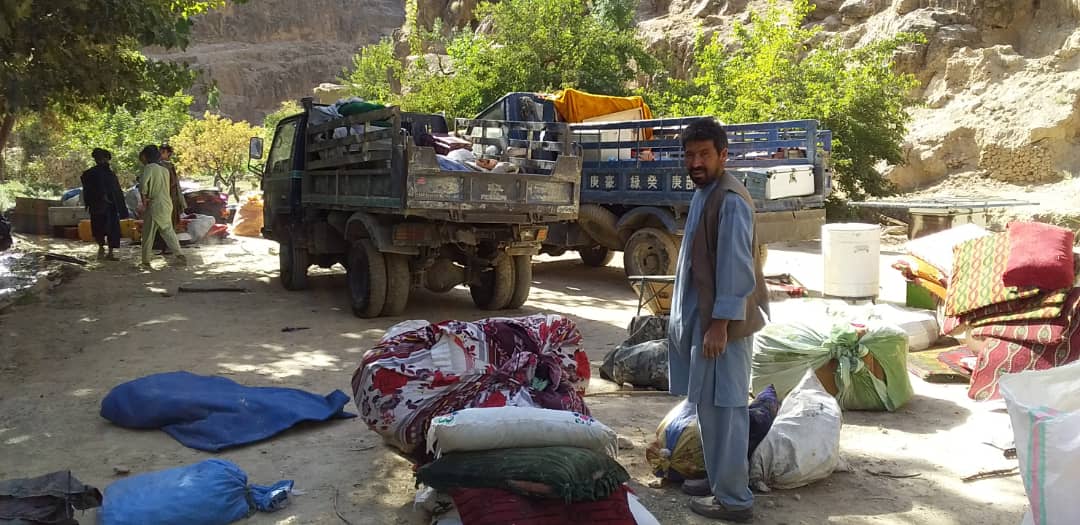
Hamed Hadian, an Iranian journalist who went to Gizab district for research on the forced displacement of Hazaras, wrote in a part of his report published on October 11, 2022, in the Iranian newspaper Hamshahri about the failure in Daikundi:
Reporting from this province was even harder than I thought. The reason was the presence of journalists from the German weekly Der Spiegel in the area, who had published reports on the forced displacement of the people of Tagabdar and sensitized the ruling Taliban. They had told the locals that if a journalist came, they should block their work and immediately report it to the authorities. This warning made the job difficult and it was not possible to easily talk with people and locals in public.
He writes in his report that journalists and civil activists in the area were also not in a good situation, and one of them said:
After publishing some information about the forced displacement, we were very explicitly threatened to death by the provincial Security Commander… Some local elders were summoned to the capital and threatened to tell the media that our people left the area voluntarily… An old man who had first published a video of the Gizab incident in the Tagabdar region has also fled.
Hadian continues:
We stayed the night in one of the villages in Gizab that had not yet been evacuated. In conversations that night with the locals, I found out that the deadline for the evacuation of Shagholja and Kharkak villages had ended; however, the Taliban governor had told the people of Gizab that he would suspend the displacement until the end of spring due to the media attention. Although in reality, the need for displacement had not changed from his point of view. There were no signs of a complete halt to the displacement. Locals said the new owners of the properties and lands who had won the long-standing dispute thanks to the Taliban told some locals and elders that they could buy back their homes and lands at double the price… but the farmers had no money to return.
Hadian continues in his report titled “The Greedy Eyes of the Pashtuns on the Edge of the Helmand River”:
In the villages, people were afraid to talk about it and bring disaster upon themselves. Nevertheless, some older people were not shy about talking and complaining. I asked an old man about the reason for these events (the forced displacement of the people of Gizab’s 15-village area). He said: These areas are among the best agricultural areas on the edge of the Helmand River, where a variety of agricultural products can grow. His reference is to the geographical situation of the disputed villages, all of which are located on the edge of the Helmand River and are among the most fertile areas in Afghanistan.
While confirming the Taliban’s discriminatory and racist behavior against Hazaras, Hadian refers to the racial and historical disputes between Hazaras and Pashtuns and emphasizes that after the suppression and massacre of Hazaras by Abdul Rahman, which led to the political, economic, and social deprivation and displacement of Hazaras, the scope of this ethnic conflict will increase under the shadow of the Taliban regime as a government whose leaders do not obey any law, and the Pashtuns have greedy eyes on the fertile lands of Hazaras. He writes in surprise about the way the Taliban deal with these legal disputes:
But this time, legal disputes have been resolved in a strange way; after the Taliban came to power, the group’s officials, without going through the legal process and the Afghan courts, issued a forced eviction order for people’s lands and told them, “Either you go by force or we will fight and blow up your homes.” Hadian has added that “up until today (October 11, 2021), seven villages have been evacuated in different ways. One of the residents said: After the Maghrib prayer, they came. They told us right there, either you leave, or we fight. We asked for a few minutes to leave. We spent the night in the fields opposite our house and left the area in the morning. Even a few infants were left outside without blankets and belongings (in this cold). In the morning, with the mediation of a white-bearded local elder, we managed to take some agricultural products and household items.
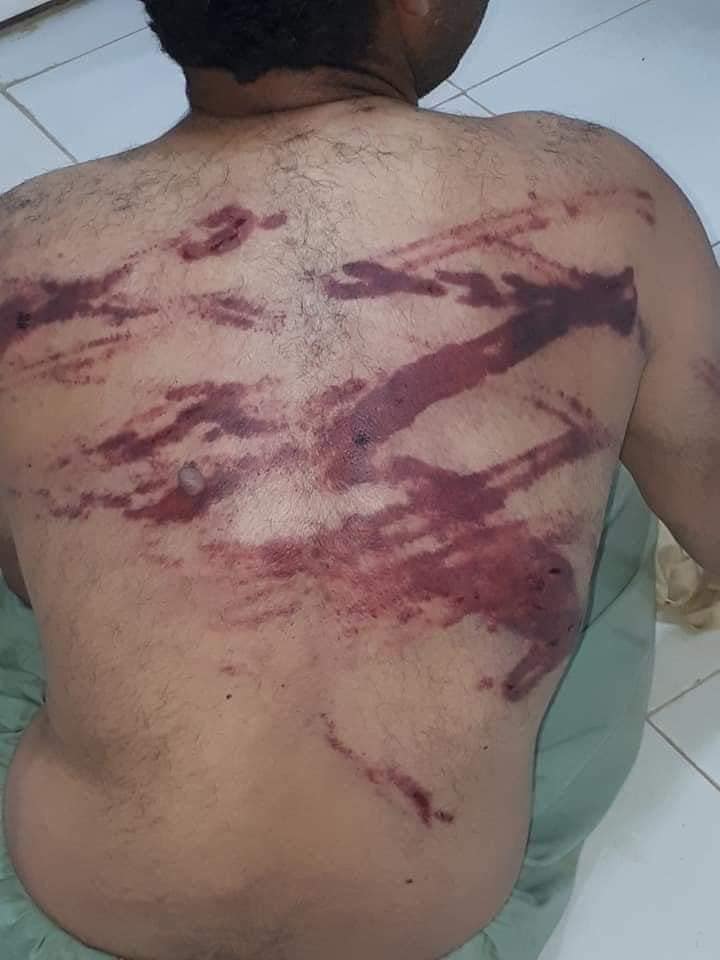
Hadian, who was an eyewitness to the forced displacement of the people of Kaindar village, writes:
… A little further on, we saw a Toyota [truck] from afar loading people’s wheat. When they were forcing people to leave, they were not allowing them to take their crops except for a small amount, and now they (the Taliban) had become thieves of the people’s property… One of the residents… said: Twenty years ago, the Taliban also expelled us from Kaindar, and we returned after their fall…
Burning and setting fire to the houses of the residents of Kaindar village is another crime that Hadian confirms based on his own observations:
To return, we had to spend the night in Sartagab village, where the Taliban had occupied it three months earlier and burned all but a few houses. Some people did not have money to repair their houses, like an old man who said he could only repair one room. He said some had left their houses and gone. This leaving and going was the invaders’ wish that seemed to have come true, and now the people’s hearts are bleeding. Their biggest grief is the Qurans that were burned in the houses and even in the mosques. The Taliban had claimed that a few of the residents were part of the government and had resisted against Taliban once. Now they would not admit that burning these houses was their doing, and they threatened the villagers not to say anything. Inside the houses, some of the people’s livestock had been burned alive, and as far as the eye could see, there were sewing machines, the only tool for the village women’s work, which now had nothing left but scrap iron on the debris.
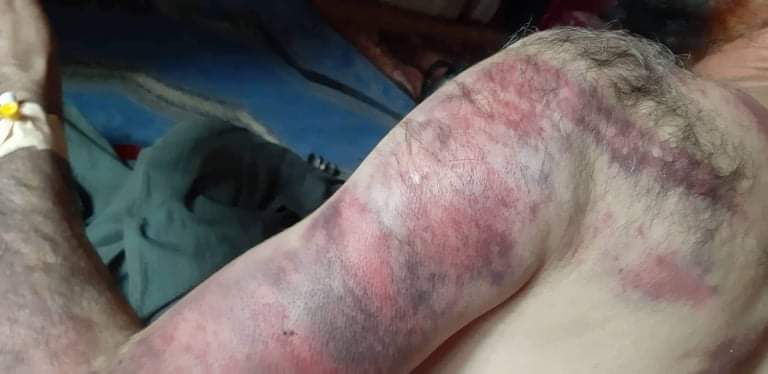
Human Rights Watch, on October 21, 2021 (about a month after the forced displacement of the people of Daikundi), announced that the Taliban group in many provinces of Afghanistan, including Daikundi, had forcibly displaced thousands of Hazaras from their homeland and distributed their agricultural lands to their Pashtun supporters. The report specifically mentioned that the displaced families were Hazara and Shia, who were given only a few days by the Taliban to present their legal documents and claims. However, sources in Daikundi, including local residents, say the Taliban never gave them this opportunity. Even three people who had gone to the district office on behalf of the landowners to present documents were imprisoned by the Taliban.
3. Destruction of the Crops of the People of Kisaw by the Nomads
Kisaw is a relatively populous village in the Kiti district, famous for its fertile lands throughout the region. Due to its beauty, agricultural diversity, and abundant water, Kisaw is known as Jannat-al-Hazara (the Paradise of the Hazaras).
Last year, in 2022, when the people of Daikundi faced unprecedented challenges due to drought, Pashtun nomads invaded the village with tens of thousands of livestock. In addition to destroying crops, irrigation canals, water reservoirs, and orchards, they grazed their large herds of goats and sheep on the people’s fields. When the landowners complained to the local Taliban administration, they took no action against the devastating nomad invasion. A Kisaw resident, who wanted to remain anonymous, told to the Jade-Abresham Weekly:
All people of Kisaw are farmers. In the past years, the situation of the people was very good; but this year, in addition to the drought, the nomads have come to Kisaw with their herds of goats and sheep. Their herds have grazed all our pastures and grazing lands in the mountains and deserts.
This Kisaw resident added (until the date of interview) that the nomads had occupied all parts of the village and had set up tents on people’s agricultural lands, let their herds roam the fields, forcibly collected the villagers’ fruits, cut down their trees, and gathered firewood. According to him, the nomads brutally destroyed the villagers’ irrigation canals, and water reservoirs and harassed the people arbitrarily. When the people complained to the district officials, they supported the nomads instead of the villagers. He continued:
We currently do not have control over our lands, houses, and gardens; armed nomads treat us the way they want. When we ask the nomads to leave the village, they point to their guns and say these lands belong to them! The nomads own various light and heavy weapons; even their women and children are armed. Our elders say that even during the time of Zahir Shah and before, the nomads could not enter Kisaw because they had no legal or customary documents; but now they are encouraged and supported by the Taliban.

Another Kisaw resident testified that after the invasion and destruction by the nomads, the people of the village were in a very dire situation, as they had neither the ability to confront the nomads nor were the Taliban paying attention to their complains. The villagers have no other source of income, occupation, or livelihood than their lands. Local sources also confirm that the nomads had been present in Kisaw and neighboring villages for months, causing irreparable damage to the people’s crops and orchards. However, the Taliban government not only failed to prevent them but also openly supported the nomads, threatening the residents of Kisaw with imprisonment and torture.
4. The occupation of pastures and rain-fed and irrigated lands of the people of Chaharsadkhaneh in Miramor district
On July 10, 2022, local sources had reported that Pashtuns from Ajristan district of Ghazni invaded the Chaharsadkhaneh village in Miramor district of Daykundi, claiming ownership of irrigated, rain-fed lands, and pastures belonging to residents of eleven villages, such as Dandab, Takato, Ab Zawar Ali, Zardayrgi, Sabzqol, Akhtam, Nowborida, Gulak, and Ghajurak. Over two thousand Hazara families live in these villages. At the same time with this conflict, the nomads of Sharan tribe (one of the Pashtun nomad tribes) sent a threatening letter to the people of Nayak village (a village in Chaharsadkhaneh) on July 16, 2022, stating, “Leave Nayak village because these lands belong to us!” Local sources and Chaharsadkhaneh residents consider the Kochi’s’ (nomads) claim to be entirely false; according to them, all the lands in Ajristan district belonged to Hazaras up to one hundred years ago. Ajristan and its settlements were seized by Abdul Rahman’s army in the late 19th century and given to Pashtun tribes. Therefore, Pashtuns and nomadic shepherds continue to seek the occupation of Hazaras’ properties and expansion of their territory based on the logic of oppression and government-backed seizure.
The locals told “Jade-Abresham Weekly” that after Nayak residents resisted the threats from Sharan nomads and asked them to provide evidence for their claim, they instead resorted to various methods of harassing and harming the people, some of which are enumerated below:
They looted the commercial goods of travelers and shopkeepers in Dasht-e-Nahur (on Ghazni-Miramor route) several times, but the local Taliban government in Nahur never paid attention to the complaints of travelers and victims and did not investigated.
The Kuchis destroyed hundreds of acres of irrigated and rain-fed farms in the villages of Dandab, Ab Zawar Ali, Gulak, Nowborida, Zardayrgi, and other villages by grazing their herds of goats, sheep, and camels.
On July 10, 2023, one local man was beaten to near-death by two armed Kuchis, leaving him in a coma for several days.
Three people from Nayak village who had gone for work to Ajristan were kidnapped by Pashtuns and held hostage. Eventually, after extensive efforts by Nayak’s authorities, they were released.

On August 29, 2022, armed Kuchis attacked shepherds and villagers in Nayak, subjecting them to about two hours of gunfire from light and medium weapons. Fearing for their lives, local residents took refuge in nearby mountains and villages; in this incident, a man named Rajab was injured.
The findings of the “Jade-Abresham Weekly” show that as a result of the armed attacks of the Kuchis on the inhabitants of the disputed villages, the people of Chaharsadkhaneh have been living in constant terror for more than a year and a half. Local residents say that when people went to the district for justice, the local Taliban rulers told them that they would investigate the matter, but in practice, they did not take any action to prevent the Kuchis’ aggression.
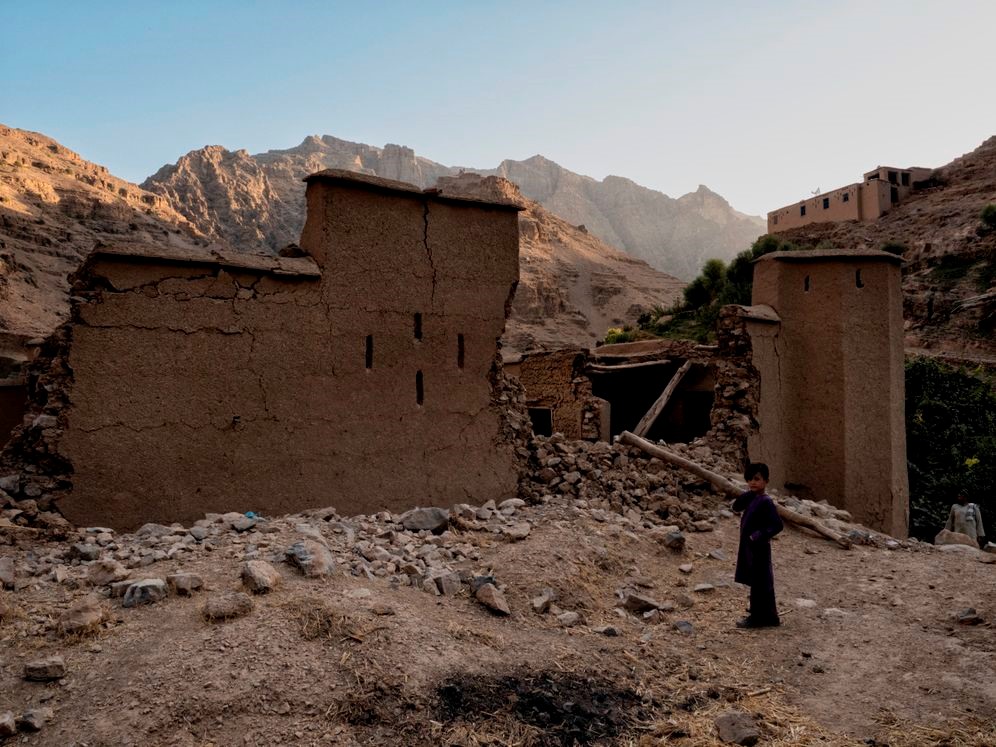
According to local sources, the Taliban and the Kuchis have colluded to put pressure on the inhabitants of the mentioned villages. One of the local residents, who does not want to mention his name for fear of the Taliban, tells “Jade-Abresham Weekly”:
The main goal of the Taliban is to put the Hazara lands in the hands of Pashtuns. Therefore, when we complain in the district, our complaints are never investigated by the Taliban. If the international community recognizes the Taliban, they will directly seize these lands and pastures by force, and distribute them among their tribes and relatives. Most of the employees of the Miramor district are Pashtuns from Ajristan and have family ties with the Kuchis, and we know them.
5.Threat of forced migration of the inhabitants of Kijran
Local sources reported on November 10, 2022, that a Pashtun man with close relationshipt to the Taliban group had claimed ownership of the agricultural lands of the inhabitants of 15 villages; Kork Turgi, Shigatak, Bidak, Londa Bidak, Sang Shahrak, Trangak, Awdara,, Khamitop, Kajaki, Pasap Lo, Band Sang, Pasht Saghum, Pasap Bazmir, Sardasht, and Tariknow in Kijran district, threatening all of the inhabitants of these villages, which include more than four thousand families, with forced migration.
According to local reporters, a man named Hamidullah claims that the mentioned villages were once the pasture of his grandfather’s sheep. However, this claim is false because everyone knows that all these lands, including those that are in other parts of Kijran under the control of Pashtun tribes, used to belong to the Hazaras. But since the claimant’s grandfather was one of the senior members of the Taliban during the previous government, Hamidullah has very close relations with the Taliban and wants to seize the people’s lands using this advantage.
The Information Daily newspaper, on November 10, 2022, has written in a report on this issue: Local sources in Kijran and Khedir districts of Daikundi province say that people close to the Taliban have claimed ownership over the lands of 4,170 families in these two districts, and have threatened the local residents with forced displacement. The report, quoting local sources, states that the dispute between “Hamidullah” and the residents of these villages has been ongoing for seven months, and recently, the Taliban’s primary court in Kijran district, without “proper investigation and examination,” has ruled in favor of “Hamidullah.”
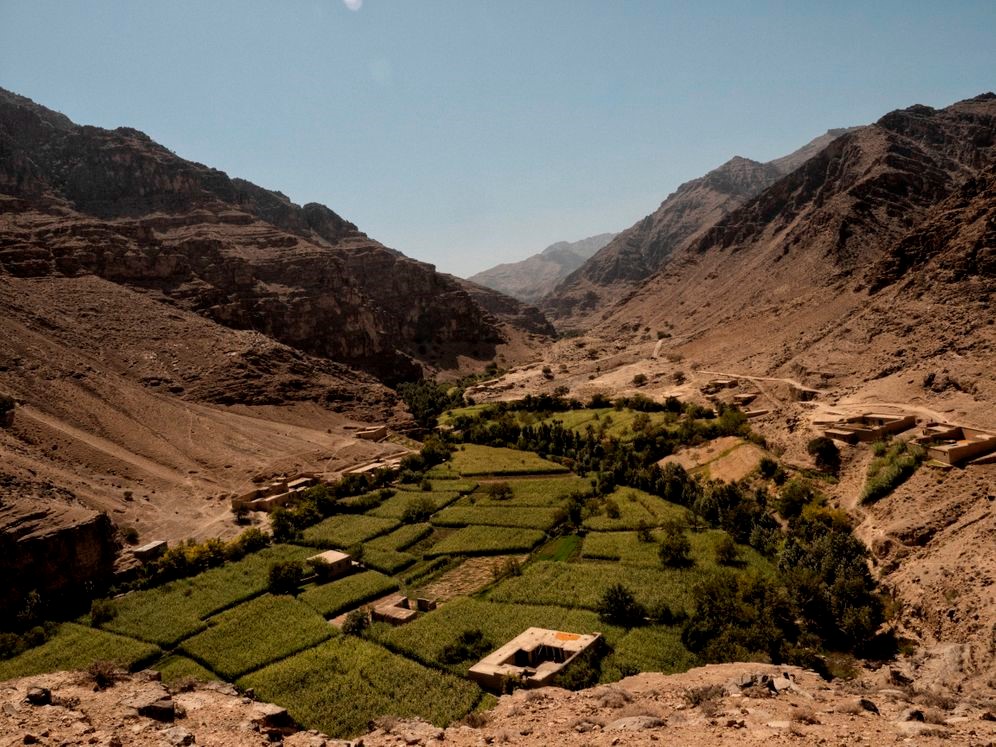
The findings of the “Jade-Abresham Weekly” also show that in the legal dispute between the claimant and the villagers, the Taliban’s primary court, without examining the landowners’ documents, conducting sufficient investigation, and following legal procedures, ruled in favor of Hamidullah. According to local sources, the district governor and the Taliban judge in Kijran district at that time had told the landowners that Hamidullah was the grandson of Mullah Niaz Mohammad, one of the Taliban’s elders, and they had no choice but to comply; however, after the publication of reports by human rights organizations and Amnesty International on the Taliban’s ongoing crimes against the Hazaras, the subsequent stages of this dispute have been stalled.
The residents and landowners believe that the Taliban have temporarily suspended the pursuit of this dispute for political expediency, as the publication of such news in the media and cyberspace is not in the Taliban’s favor, and they fear that they will not be recognized by the international community. A local resident has said:
This dispute is not over; it is merely postponed; because the Taliban are currently waiting for the world to recognize them officially. The primary court ruling is in Hamidullah’s possession, and whenever he wants, the Taliban will forcibly hand over the people’s lands to the claimant without pursuing this dispute in Sharia courts. This is because the Taliban have a plan to hand over Hazara lands across Afghanistan to the Pashtuns.
6.Forced displacement of residents of Ghamqol village in Khedir district
Local sources on September 27, 2022, reported that Pashtun nomads, after attacking Ghamqol village in Khedir district, have threatened nearly 200 families with forced displacement. According to the sources, the nomads claimed that these lands belonged to them and that the local residents must leave these villages. After the nomads’ threats, the villagers, with their ownership documents, referred to the Khedir district office, and the district governor referred their case to the provincial court. When the villagers’ representatives went to the provincial office to seek justice, they were imprisoned by order of the Taliban security commander in Daikundi.
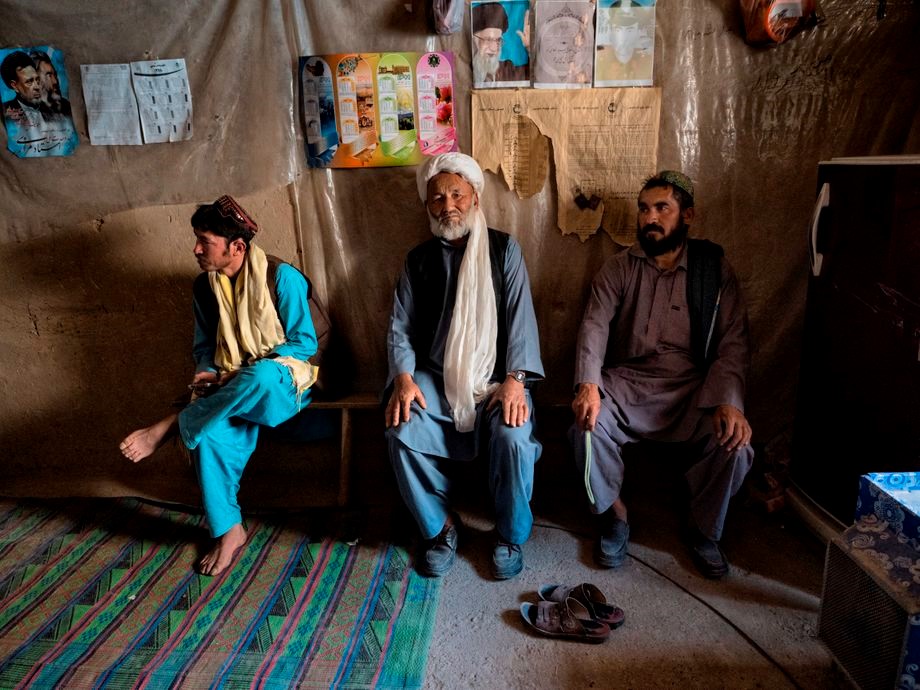
Residents of Ghamqol village, at that time, had told local media that the nomads had coordinated with the Taliban administration before entering the village; because if this collusion had not taken place, the Taliban should have impartially and based on documents and evidence, dealt with this dispute; while the Taliban security commander in Daikundi, without referring the dispute to the courts or examining the documents of the native residents of the village, had imprisoned the people’s representatives.
In those days, when a reporter from one of the local media interviewed the Taliban security commander about the imprisonment of the village residents, he said, “This is a legal dispute, and I have no information about it.” This is while he had imprisoned six villagers.
Some residents of Khedir district in Daikundi, at that time, had said that “armed” nomads had threatened nearly 200 families in the “Ghamqol” village of this district to leave their homes.
Ettelaat-e Rooz newspaper also confirmed this incident on October 5, 2021, quoting local sources, and reported that armed nomads with light and heavy weapons had entered Ghamqol village in several groups, claimed ownership of the villagers’ lands, and demanded that them to leave Ghamqol as soon as possible. According to this report, in addition to threatening the villagers to leave their homes, the nomads had demanded each family to pay between 50,000 – 200,000 Afghanis in cash as the price of the products of the past years. The nomads had also threatened the people that if they did not leave their homes and refrained from paying the requested amount, they would use the Taliban’s “Red Unit” to evict them and collect the money. This situation forced the residents of Ghamqol village to sell a significant part of their livestock and agricultural products to pay the money nomads demanded. A resident of Ghamqol village, who had withheld his name, said at the time to the “Jade-Abresham Weekly”:
Some Pashtuns living in Helmand claim to be partners in the lands of Ghamqol in Khedir district of Daikundi province. Their claim is rooted in the past, during the time of Abdur Rahman, when Abdur Rahman had granted all Hazara lands to Pashtuns or Pashtun nomads with government documents, and they grazed their livestock on the mountains and deserts of Hazara lands without any obstacles, considering themselves entitled to Hazara agricultural and desert products. They trampled on the people of Hazara and their agricultural products with their livestock and made the scene tight for them. The Helmand Pashtuns’ partnership in the lands of Ghamqol is also like this. For this reason, for years, the residents of Ghamqol have been paying half of the products of their lands to them. With the arrival of the Taliban, the Pashtuns’ demands have increased. In the small and remote village of Ghamqol, two or three inhabitants in the upper area called Jar e Jawoz have been abandoned their house and lands as the Pashtuns had imposed various pressures on them. They were forced to leave their lands. Also, a group of nomads had been roaming the villages of Ghamqol for about a month, going from house to house seeking to take half of the products of the native residents’ lands.
7.Forced displacement and oppression of the residents of Ashterli
Local sources from Ashtarlai district in Daikundi reported on November 5, 2021, that 350 Taliban fighters had attacked the village of Shaikh Miran in Ashtarlai district of Daikundi. The local sources also added that they first expelled members of five families and employees of two charities from their homes and offices, then turned the seized locations into military bases. Following this incident, some members of the displaced families appealed to the provincial center for justice, but the Taliban governor in Daikundi paid no attention to their complaints.

Based on the findings of the “Jade-Abresham Weekly” organization, the Taliban’s military forces’ treatment with the people of Ashtarlai was becoming increasingly brutal. They arrested and tortured civilians on various pretexts and forced some to provide food and fuel.
The findings of the “Jade-Abresham Weekly” show that the residents of Ashtarlai were forced to pay ransom to the Taliban while they are unable to provide food and fuel for their families. When people appealed to the Taliban authorities in Kabul to stop the abuses of their forces, the Taliban leaders, as usual, remained silent in the face of people’s demands. As a result, the Taliban forces intensified their violence against the local residents.
One of the local residents, who fears revealing his name, says, “When the Taliban displaced several families, we complained to the province authorities. The governor did not pay attention to our complaint. We also complained in Kabul, but no one helped us. After that, the Taliban forces’ treatment with us became more brutal.” When the local residents’ efforts failed, the Taliban threatened the people with torturing and forced displacement every day without any reason. This local resident adds, “When we realized that no one pays attention to our complaints, we were forced to remain silent because we knew that the more, we talked about this issue, the worse the situation would become and the Taliban’s treatment with us would be more brutal.”
The Zan Times website, citing local sources, reported on October 30, 2022, that the Taliban attacked the village of Shaikh Miran on the night of Aqrab 4 and forcibly displaced the residents of the village with threats and force the following morning. In this report, quoting a resident of the village of Sheikh Miran, it is stated: “About 360 armed Taliban came to our village at night and told us on Thursday morning to leave our homes as soon as possible so that their people could settle there.” This source, a 66-year-old man, told Women’s Times that the residents of Sheikh Miran are extremely poor and do not even have the financial means or the ability to relocate their family members to another area.
Another resident of the village said, “From Thursday morning to Friday morning, twelve families were forced to leave their homes, and the rest are bewildered about where and how to go.” This person, who has witnessed the Taliban’s violence, said, “The Taliban broke the lock of a building belonging to an organization working in the health and malnutrition of mothers and children and entered the building. When someone asked the reason, they beat him.”
The residents of Shaikh Miran at that time said that fear had taken hold among the people following this incident, while the lack of facilities and the cold weather had also deprived them of the opportunity to go elsewhere.
Since the Taliban’s return to power in August 2021, they have forced a portion of the non-Pashtun ethnic population in central and northern Afghanistan to flee their homes. So far, numerous reports of forced displacement of indigenous people from areas such as Khwaja Bahauddin Takhar, Panjshir, Behsud Maidan Wardak, Balkhab Sar-e-Pul, and Salang Parwan have been publicized.
8.Conversion of a school into a military base
Sources reported on November 27, 2021, that hundreds of Taliban fighters attacked one of the villages in Sang-e-Takht and Bandar Daikundi, turning an educational center called “Khatam-al-Nabiyin (PBUH) Religious School” into a military base. According to local sources, after the Taliban’s relocation to this educational site, hundreds of girls and boys who were studying there were deprived of continuing their education. After this incident, village elders raised the issue with the Taliban district governor and governor in Daikundi, but they paid no attention to evacuating the mentioned educational center.
The Shafaqna News Agency website reported on October 28, 2022, that “the Taliban turned the Khatam-al-Nabiyin religious school in Daikundi into a military base.” According to this report, nearly 350 Taliban fighters occupied the Khatam-al-Nabiyin religious school and several surrounding houses in the center of Sang-e-Takht and Bandar as a military base. This school had several classrooms, dormitories, and a library.
According to the report, the Taliban forces had thrown out the books in the school library, which had opened two months earlier. The school had nearly 150 male and female students and several teachers who were teaching there.
Reports of forced displacement of the people of Shah-Tut village in Kiti district:
Sources in Daikundi, on June 18, 1401, quoted residents of “Shah-Tut” village in Keti district of this province, reporting that local Taliban officials had ordered them to leave their village.
The Ettelaat e Roz newspaper, on the same date, cited local residents saying: “Local Taliban officials intend to hand over the land they (villagers) inherited from their ancestors to a Pashtun man.” According to this report, a Pashtun man named “Jan Mohammad” claimed ownership of nearly 70 acres of agricultural land and 100 houses belong to the residents of “Joye Now – Seydabad” village; however, he had no document to prove his claim, while the villagers not only inherited the disputed lands from their ancestors, but also had property deeds and tax records for their lands.

The Tamaddon TV network website, on June 7, 2022, quoted residents of “Joye Now Seydabad” as saying in a report, “The local government intends to forcibly seize their agricultural lands and residential homes. They say the local government has given 70 families in the area only five days to leave their homes.” The report said that despite having the necessary documents to prove ownership of their property, they were still threatened with forced displacement.
According to this report, some villagers were forcibly abducted from their homes by unidentified individuals and severely beaten to leave the village as soon as possible. The Ettelaat e Roz newspaper also quoted another local resident as saying, “The Taliban, in recent days, have arrested the residents of “Joye Now Seydabad” village and ruled in favor of the Pashtun man without considering the villagers’ documents.” This villager told Ettelaat e Roz that the ruling was issued by the deputy district Taliban in Kiti district. The report continued, quoting this person, “According to the Taliban ruling, villagers have five days to leave, and if they don’t, the Taliban rangers will come. Two days have already passed.” The report also quoted the villager as saying that some villagers had gone to Nili, the center of Daikundi, and if they do not receive a different ruling within the next three days, “they will be forcibly displaced.”
The Jomhur News Agency website, on June 18, 1401, quoted a local source as saying in part of its report, “In recent days, residents of Joye Now Seydabad village have been arrested by Taliban, and the dispute was ruled in favor of the Pashtun man without regard to the villagers’ documents.” According to this resident, the ruling was issued by the deputy district Taliban in Keti district. Based on this report, the Taliban ruling gave villagers five days to leave or “the Taliban rangers will come.” At the time of this report, three days of this deadline had passed. The report continued, quoting villagers as saying that some of them had gone to Nili, the center of Daikundi, and if they do not receive a different ruling within the next three days, they will be forcibly displaced.
Findings of the Jade-Abresham Weekly show that “Jan Mohammad” had also filed claims against the residents of Shah-Tut village during the previous Taliban regime and considered their lands to be his property. However, at that time, the Taliban court judge had ruled in favor of the villagers. The residents of Shah-Tut village claim that they have that ruling as well, but the local Taliban authorities do not give any value to their ruling. The Taliban are more focused on implementing the ethnocentric policy of “seizing the lands of the Hazaras and distributing them to the Pashtuns” and, in practice, are not committed to any other legal, religious, or customary criteria.
9.Forced displacement of the people of Takato village in Kiti district
Civic sources reported on August 1, 2022, that the Kuchis had threatened the residents of Takato village in Kiti district of Daikundi, consisting of more than 60 families, with forced displacement. According to the civic sources’ report, some Pashtun Kuchis led by an individual named “Mulah Torjan” claimed that all the lands of Takato village belonged to the Kuchis.
The Ettelaat e Roz newspaper also reported on June 18, 2022, that “the Kuchis have raised the issue of ownership of the lands of Takato village since the Taliban came to power and have been in dispute for the past ten months. According to a source, the pressure of the Kuchis on the local residents has increased recently.” Based on this report, over 15 families from this village had migrated to Iran due to threats from the Kuchis and Taliban individuals in the ten months before this date.

The Ettelaat e Roz report continues that the Kuchis, who have the full support of local Taliban authorities, do not want to pursue their claims through judicial and justice courts because they have no religious or customary documents to prove their claims. For this reason, they demanded the local residents either leave their homes or buy the disputed lands at exorbitant prices from the Kuchis.
The findings of the “Jade-Abresham Weekly” also shows that the Kuchis, who have attempted to seize the lands of the Hazaras through claims of ownership and threats of forced displacement against the residents of Daikundi, do not have any documents to prove their claims. Instead, they rely on the full support and dominance of the Taliban to put pressure on the Hazaras.
According to local residents, local Taliban officials in Daikundi not only investigate the Pashtun Kuchis’ claims against the Hazara people fairly but also force the Hazaras to pay ransom to the Kuchis for any reason in all cases.
10.Forced displacement of residents of Pusht-Ruq village in Khedir district
Local sources reported on August 19, 2022, that the Taliban, in collaboration with Pashtun nomads, forced 10 Hazara families to leave their homes in Pusht-Ruq village in Khedir district of Daikundi. According to the reports from local sources, the Taliban forced the Hazara families to leave the area after an armed conflict between two residents of Kian village in Khedir district resulted in the death of a member of the Taliban group. Following the murder, the Taliban arrested several residents of Pusht-Ruq village in Khedir district, pressuring and torturing them to apprehend and hand over the fugitive individual.
According to the report, the Taliban forcibly made the residents of Pusht-Ruq village in Khedir district displace the family of the fugitive, who had accidentally killed a member of the group. At that time, in addition to the murderer’s family, the Taliban also forcibly displaced 10 families related to the fugitive individual. Findings from the Jade-Abresham Weekly indicate that the displaced families sought refuge in other provinces.
11.Taliban’s extortion from Daikundi residents
After seizing power, the Taliban has used various methods to forcefully extract money from Hazaras alongside other forms of harassment and pressure, sometimes achieving their goal through the use of nomadics. In this section, we will discuss the most prominent cases of extortion in Daikundi.
12.Extortion of nomads from residents of Gham-Qul village in Khedir district
Local sources in Daikundi reported in August 2021 that nomads, with the support of Taliban officials and without holding a trial, forced the residents of Gham-Qul village in Khedir district of Daykundi to pay blood money for five nomads. According to the report, the Taliban initially set the blood money for each person at 1.5 million Afghanis; however, with the mediation of a Hazara-born Taliban, the final blood money for each person was settled at 600,000 Afghanis, amounting to a total of 3 million Afghanis paid by Gham-Qul residents to the nomads.
According to the findings of the Jade-Abresham Weekly, in connection with the aforementioned blood money, the Taliban arrested 40 elders of Khedir district in Daikundi on September 24, 2021, and imprisoned them in the district headquarters. They were detained by a Taliban group claiming that residents of the “Darrah-e Khudi” area of the district had killed five nomads 40 years ago. The detainees were residents of the villages of “Gham-Qul,” “Gham-Qul Payin,” “Khairkhaneh,” “Ti Bagh,” and “Darrah-e Khudi,” who were pressured by the Taliban to pay the blood money for the nomads.
The findings of the “Jade-Abresham Weekly” show that about 40 years ago, when Pashtun nomads invaded Gham-Qul village in Khedir district and let their goats and sheep graze on Hazaras’ farms, locals engaged in a conflict with the invaders to defend themselves. As a result, seven local residents and five nomads were killed. The Taliban’s decision to force Gham-Qul residents to pay the blood money for the nomads was made while completely ignoring the blood money for the seven villagers who had been killed by the nomads. A local resident who wished to remain anonymous told the “Jade-Abresham Weekly”: “The nomads took 3 million Afghanis from the people for the blood of their dead; but when we told the Taliban that the blood money for our dead should also be paid, the district governor and security officials of the Taliban said, ‘If you don’t stay quiet, we will take 6 million Afghanis from you. Thank God that your problem was solved with this small amount.’ The people reluctantly accepted the Taliban’s decision.”
Based on the findings of the “Jade-Abresham Weekly”, with the unconditional support of the Taliban, the nomads even demand blood money from Hazara people for those who died of natural causes. A local elder said: “Over the past 50 years, many people have been killed in various conflicts, and the main killers are not clear. In conflicts between nomads and Hazaras, people have been killed, and the local people have suffered the most casualties.” According to him, since the nomads are supported by the Taliban, they even demand blood money from Hazaras for those who died naturally or from various diseases. He warned that: “The nomad is just a tool. It is the Taliban who are actually pushing these plans.”
The daily newspaper, Ettela’at-e-Ruz, reported on October 4, 2021, that the Taliban’s primary court and district governor in Khedir, Daikundi, had issued an order to collect blood money from the elders of 27 villages in Khedir district following a complaint from nomads regarding the murder of several nomads and local people decades ago during a dispute between them. According to the report, the Taliban had ruled that each family must pay 800,000 Afghanis to the nomads, but they ignored the blood money for the nine Hazara victims.
13.Nomads extorting money from residents of Darreh-Khudi village in Khedir district
Sources reported on October 4, 2021, that the nomads had claimed at the Khedir district office that one of their relatives had been killed by the residents of Darreh-Khudi village years ago. The Taliban immediately, without holding a trial, confirmed their claim and forced the local people to pay one million Afghanis, of which 800,000 Afghanis were given to the nomads and 200,000 Afghanis were taken by the Taliban officials. According to the report, the Taliban later claimed that this issue had been resolved by local elders; however, one of the local residents, who did not want his name to be disclosed, said:
Considering these reports, it seems that the Kuchis, with the support of the Taliban, are extorting the people. In the case of the killing in their own valley, they cannot recall which Kuchi was killed. If the Taliban’s claim was true, they would surely have identified the killer. Even if this claim is true, the guilt still falls on the individual killer. The Kuchis have complained about all the villagers, and the Taliban district governor, without investigating the matter, has ordered his forces to forcibly collect one million Afghanis from the people and divide it between themselves and the Kuchis. This is because the Taliban consider all Hazaras guilty and deserving of oppression and injustice due to ethnic and religious differences.

c) Kuchis extorting the residents of Siahchob village in Sangtakht and Bandar
Local sources in Daikundi reported on June 4, 2022, that Kuchis in Sangtakht and Bandar district of this province claimed that in 1984, a Kuchi man was killed in a clash with the people of Siahchob village, and the local people must pay blood money for the victim. According to this report, local Taliban officials, without investigation and research, had ruled that the villagers had to pay one million Afghanis to the Kuchis as compensation. At the same time, local sources say that the Kuchis’ claim is entirely false because the people of Siahchob did not kill the person in question, and the Kuchis, resorting to such accusations and with the support of the Taliban, are plundering the Hazara people. One local resident told the “Jade-Abresham Weekly” that perhaps other people had killed the Kuchi, as he had asked the village elders about the matter and nobody remembers it. He further says, “Now that the Taliban government is in power, the Kuchis, with various pretexts, are seizing the Hazaras’ property, as they know that any claim they make against the Hazaras will be supported and approved by the Taliban.”
d) Kuchis extorting the residents of Chaharqol Miri village in Sangtakht and Bandar Local sources reported on August 21, 2022, that local Taliban officials in Sangtakht and Bandar district had set the blood money for a Pashtun man, who, according to the Kuchis’ claim, was killed by the residents of Chaharqol Miri village in 1991, at two million and 500 thousand Afghanis and a KalashNayakov rifle. This is while the villagers say that a Kuchi man was killed about 30 years ago in an area between Daikundi and Ghor provinces, but the residents of Chaharqol Miri village had no involvement in this incident because the killer was not identified at that time. That man could have been killed by the Kuchis themselves.
Based on this report, the villagers consider the Taliban’s decision to be cruel and contrary to Sharia and law. A local resident, who was afraid to reveal his name, said that the Taliban district chief had forcibly obtained a confession and commitment from the elders of Chaharqol Miri village and had set a deadline for them to collect one million and 500 thousand Afghanis from the villagers and deliver it to the Kuchis within two weeks. This resident of Chaharqol Miri village added, “This decision was completely biased, cruel, and ethnically motivated. The Taliban officials in this case supported the Kuchis with all their might. The people wanted to cancel this order, but due to the Taliban’s full support for the Kuchis, they were unable to protest against this illegal decision.”
The Hasht-e Sobh newspaper, on July 21, 2022, in a report quoting local sources, wrote that the Kuchis had claimed that the inhabitants of Chaharqol Miri village in Sangtakht and Bandar district of Daikundi had killed a Kuchi shepherd years ago. According to sources, the Taliban, after this claim, in a meeting with the Kuchis and the inhabitants of Sangtakht and Bandar district, ruled that the inhabitants of Chaharqol Miri village in this district should pay two million and 500 thousand Afghanis and a KalashNayakov rifle as blood money for the shepherd.
e) Pashtun man extorting the residents of Shahristan district
Local sources on October 13, 2022, reported that nearly twenty years ago (at the beginning of the Republic regime), when a road connected Ajristan district of Ghazni to Shahristan district of Daikundi, a Kamaz truck full of foodstuff belonging to a man named Hamidullah from Ajristan district of Ghazni, which he had brought to sell in Giro district of Shahristan, Daikundi, had deviated from the road and overturned due to a technical defect or any other reason. After this incident, he sold all his goods at the scene to the Hazara people and transferred his truck to Ajristan. A year after this incident, Hamidullah, with the help of other Pashtuns, forcibly took a Falankoach vehicle, a Tunis vehicle, a motorcycle, and significant amounts of goods from the shopkeepers and travelers of Giro district of Shahristan, Daikundi, who were passing through Ajristan, as compensation, and even gave receipts to some of them.
However, after the Taliban took control, Hamidullah filed a complaint with the Taliban governor in Daikundi and demanded compensation from the villagers for the overturned truck. Still, when the dispute was referred to the Shahristan district of Daikundi, he did not attend the court to pursue his claim, and as a result, the Taliban governor directly ordered the district chief to collect one million Afghanis from the local people and give it to Hamidullah.
According to a public report, when the Hazara victims filed a complaint against Hamidullah to the district chief, he confessed to extorting the villagers for compensation for his truck. Still, the Taliban officials paid no attention to the Hazara people’s complaints. This case is reminiscent of a decision by one of the courts during the time of Zahir Shah in the Behsud district. Mohammad Hossein, a student from Kandahar, writes in his book “Afghanistan Yesterday and Today”: “In Zahir Shah’s time, in a conflict, the Kuchis killed a Hazara man, and one of the Kuchis’ camels was also injured.
d) Extortion of local Hazaras in Daikundi by the Taliban authorities
Over the past 19 months, local sources have repeatedly reported that the Taliban have put immense economic pressure on the residents of Daikundi by imposing excessive taxes. According to these reports, the Taliban do not have a clear and defined principle for collecting taxes from Hazaras. Each local governor collects money from the people based on personal whim and arbitrarily.
According to civilian sources, the Taliban collect a hefty religious tax called Ushr from the Hazara people, in addition to government taxes, every few months. This Ushr is not subject to any precise calculations or reporting. Local Taliban authorities force people to pay exorbitant amounts based on their desires and needs and require tribal leaders and members of local councils to collect and deliver the Ushr to the Taliban. A resident of a district in the province says, “The taxes the Taliban collect are very high; for example, they take 5,000 Afghanis per month from a shopkeeper with a capital of 50,000 Afghanis and 10,000 Afghanis per month from a shopkeeper with a capital of 100,000 Afghanis.” This district resident says that unlike the previous government, the Taliban do not follow any laws when imposing taxes,which has resulted in a stagnating job market and some shopkeepers closing their shops because they cannot afford to pay the taxes. He adds that, in addition to shop taxes, people are also obliged to pay Ushr, the amount and timing of which are unspecified: “Sometimes the council needs 30,000 Afghanis, sometimes every household has to pay 1,000 Afghanis. The time for paying Ushr is not specified; whenever they need money, they order council members to collect it from the people. It is unclear whether they collect it for themselves or deliver it to the government. The main goal of the Taliban is to seize the property of the Hazara people under any pretext.”
Massacre of the people of Daikundi
Since taking control of Afghanistan in the summer of 1400, the Taliban have killed many Hazaras for various reasons due to the ingrained ethnic violence within them. In this section, we will focus on the massacre of Hazara military and civilian personnel in Daikundi.
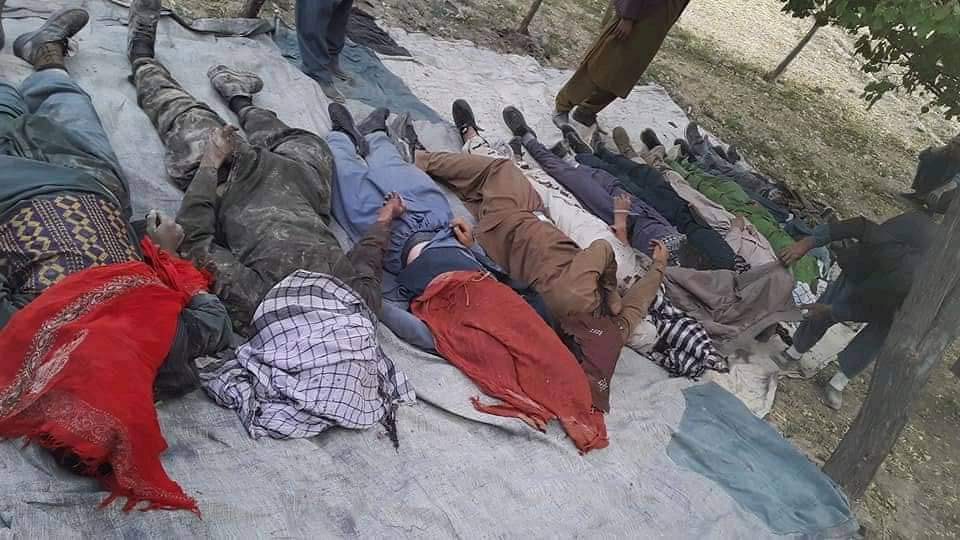
Massacre of residents in the Khedir district
Following the first days of complete control over Daikundi, the Taliban issued a statement containing the following provisions:
Those who have weapons must hand them over to the Islamic Emirate forces.
Those who have already surrendered their weapons must bring their receipts and receive confirmation.
Those who were members of the previous government’s security forces and have been discharged must bring their discharge papers and obtain confirmation again.
All individuals must bring a sum of 2,000 Afghanis with them when visiting the district.
Massacre of former military personnel in Khedir district
According to local and civilian sources, after Daikundi’s capital city, Nili, fell to the Taliban on August 12, 2021, 34 former government soldiers who had previously laid down their arms sought refuge in the Khedir district. Some of them immediately fled to Iran and Pakistan, while others trusted the Taliban’s general amnesty announcement and stayed in their homes. During this turmoil, a man named Mohammad Ali Sadaqat, who was among the local Taliban affiliates, negotiated with them, assuring that if they surrendered to the Taliban, their safety would be guaranteed. They trusted Sadaqat and showed readiness to surrender; however, after Sadaqat facilitated the surrender of some of them, on August 30, 2021, nearly 300 Taliban fighters attacked the Dehn-e Qal village in the Khedir district to arrest the unarmed former regime soldiers.
Eventually, the Taliban forces took twelve Hazara former soldiers to a nearby village called “Kahoor” and executed them en masse. In this incident, besides the surrendered soldiers, two other civilians (a man and a 17-year-old girl) who fled the scene upon witnessing the situation were also killed by the Taliban.
Amnesty International reported this incident on October 5, 2021, stating that Taliban forces had unlawfully killed 13 Hazara citizens who were members of the previous government’s security forces and had surrendered after handing over their weapons. According to the report, the massacre of former military personnel occurred on August 30, 2021, in the village of Kahoor in the Khedir district, with 11 of the victims being former members of the previous regime’s security forces and two civilians, including a 17-year-old girl.
In this report, quoting Agnes Callamard, the Secretary-General of Amnesty International, it is stated: “These ruthless executions demonstrate that the Taliban are committing crimes that made them infamous during their previous rule.” Callamard said that the Taliban have always violated the rights of those they consider enemies, even those who surrender to the group, killing them brutally: “The Taliban have repeatedly declared a general amnesty, claiming they are not targeting former government employees and soldiers; however, these massacres are in blatant contradiction with the general amnesty, and the Taliban must immediately stop these cruel killings.”
The Secretary-General of Amnesty International, in another part of her statements, said: “The Taliban must immediately stop these vengeful and cruel actions and ensure that former government employees and their families can live safely in Afghanistan. The new government must make it clear that such grave violations are intolerable and that those responsible will be held accountable under the law.”
According to an investigative report published by Amnesty International on September 15, 2022, since taking control of Afghanistan one year ago, the Taliban have engaged in targeted torture and killings of the Hazara ethnic group, executing a number of Hazara individuals. The systematic attacks by the Taliban against ethnic minorities demonstrate a pattern of assault against minorities, including former security force members of Hazara origin, who are executed by the Taliban. According to this human rights organization’s report, the Taliban consider ethnic minorities like the Hazaras as “enemies.”
Killing of a former soldier by the Taliban
Local sources in Naveh-Mish District of Daikundi, on August 4, 2023, told media outlets that on August 3, the Taliban executed Mohammad Zabuli, a former soldier in the previous government, in front of his imprisoned son’s eyes and then hanged his body. At that time, the Taliban claimed that they had not executed Zabuli, and he died of extreme fear; however, local sources in Naveh-Mish said that the former government soldier died under the Taliban’s torture.
Mohammad Zabuli had fled to Iran after the fall of the Republic but returned to Naveh-Mish after hearing about his 10-year-old son’s arrest by the Taliban. When the Taliban became aware of the situation, they besieged Zabuli’s house, and after several hours of fighting, transferred him to prison.
Shooting of a shepherd in Barakr village by Kuchis (Nomads)
Local sources reported on September 30, 2023, that Kuchis (nomads) killed a shepherd from the village of Deh-Now Barakr in Miramor District of Daikundi, injuring another person. They then took hundreds of goats and sheep belonging to the villagers. However, when the victim’s family complained to the local Taliban office, the district chief and the Taliban security commander in Miramor completely ignored the issue.
The daily newspaper “Information Day” also confirmed the news, quoting local sources in part of its report: The Kuchis attacked the villagers’ farms with their livestock, but the villagers tried to stop them. After an altercation with the Kuchis on Thursday, September 30, a local resident named Mohammad was first injured by a Kuchi man with a knife and then shot dead, with another villager injured.
Findings from the Jade-Abresham Weekly indicate that eight months after Mohammad’s murder, no action has been taken by the Taliban government to arrest his killers. The residents of Barakr village believe that because the victim is from the Hazara ethnic group and his killer is Pashtun, the Taliban do not want to hold a Pashtun accountable for killing a Hazara; instead, they try to let the case fade into oblivion over time.
h) Civilian massacre in the center of Daikundi
Local sources reported on May 3, 2023, that 250 Taliban fighters launched a night raid on the village of “Seyvok-Shibir” in the central Daikundi province, massacring members of two families. According to the report, 11 civilians, including one woman and four children, were killed in the attack, and three others, including two women, were injured. Six others were captured by the Taliban forces and taken to the provincial center as prisoners.
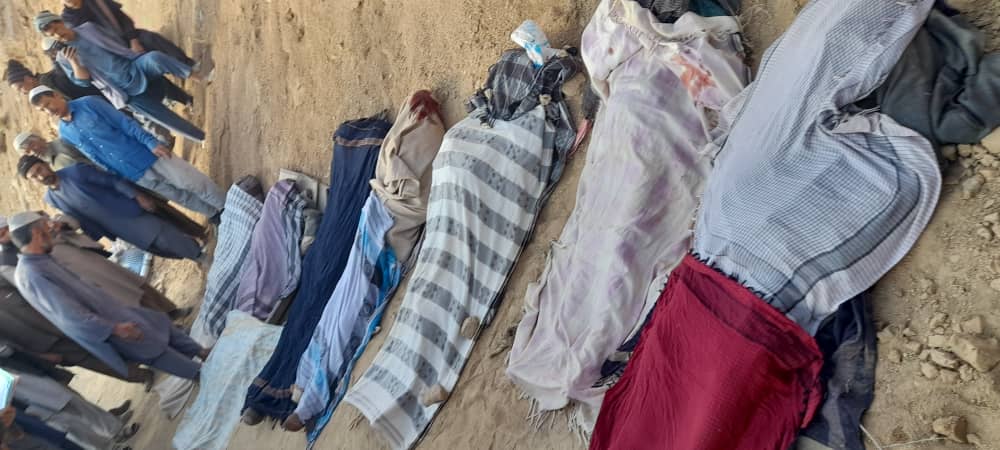
According to local sources, the fate of the captured individuals is still unknown. An eyewitness who refuses to be named describes the scene as follows:
“I had just woken up for the morning prayer when I heard gunfire. I looked outside and saw Taliban forces firing their light and semi-heavy weapons at two mud houses belonging to villagers. As a result, they killed several members of the two families who were all civilians and captured the rest, taking them to the provincial center. After the Taliban left, we approached the bodies; 11 people had been killed. Among the victims, we saw one woman and four children. Three people were severely injured, and the remaining six were taken away by the Taliban. Each victim had been shot dozens of times.”
However, the Taliban spokesperson in Daikundi has denied the civilian massacre and, in response to the news, wrote in a newsletter, “Our forces have arrested a number of residents of Seyvok Shibir village.” He explained the reason for the arrest via a Facebook newsletter, stating, “In the past years, there was an ongoing legal dispute between members of two tribes in one of the villages in the central district. The Taliban court repeatedly summoned both parties to the provincial center, but they refused to comply. For this reason, the Taliban forces arrested both parties.” Zabihullah Mujahid, a Taliban spokesperson, announced that their forces had killed a number of rebels/mutineers in the village of Seyvok Shibir, Daikundi.
On May 4, 2023, the United Nations Children’s Fund (UNICEF) condemned the massacre of civilians in Seyvok-Shibir village by the Taliban and confirmed that four boys aged 1 to 14 had been killed in the attack.
Richard Bennett, the UN Special Rapporteur for Afghanistan, called for an immediate and independent investigation into the massacre of the two Hazara families in central Daikundi one day after the incident.
Following the event, the surviving family members of the victims also called on the international community to condemn the attack on their family members as part of the genocide of Hazaras by the Taliban in an open letter. The letter also stated that the Taliban had fired more than 60 bullets at each of the killed individuals.
w) Murder of a citizen in Khedir district by the Taliban
On November 3, 2022, Radio Vatandar, quoting Mawlawi Khalil, the head of the office of Aminullah Obaid, the Taliban governor in Daikundi, reported that a 33-year-old man named Mohammad Ali, a resident of the Khedir district in Daikundi, was mysteriously killed by Mullah Abdallah, the governor of Khedir, and Azizullah Ajmal, the Taliban’s security commander in the Khedir district.
According to this report, in the middle of September 2022, Mohammad Ali went to the local administration office to pursue a legal case, but he never returned home. After that, Khan Mohammad, his brother, filed a complaint with the Daikundi governor’s office about his disappearance. According to the report, the Taliban governor referred the case to the Taliban intelligence department, asking them to cooperate with Khan Mohammad in finding his brother. However, eventually, Mohammad Ali’s body was found. Local Taliban officials admitted that they had detained Mohammad Ali, but the head of the governor’s office in Daikundi did not provide any information about the details of his murder to the media. He only said that the killing had occurred in a very mysterious way.
Findings of the Jade-Abresham Weekly show that this individual was killed on the orders of the governor and the Taliban security commander. Khan Mohammad, Mohammad Ali’s brother, told the Jade-Abresham Weekly: “My brother was a farmer who went to the Khedir district administration in September 2022 to pursue a legal case, but before the case could be reviewed by local Taliban officials, they first detained Mohammad Ali and then he disappeared. After months of searching, we found Mohammad Ali’s body inside a well. I don’t know if they killed him with bullets or tortured him to death because it was impossible to determine from his body. But I am sure that the governor and the security commander of Khedir are involved in his murder.”
One of the residents of Khedir, who did not want his identity revealed due to security threats, told the Jade-Abresham Weekly: “The victim had a legal dispute with a local Taliban named Mohammad Ali Sadaqat. However, when he went to the district administration office to pursue his case, he was first detained there and then disappeared, never returning to his home. Months later, his body was found inside a well. In fact, the governor and the Taliban commanders killed him at the instigation of Sadaqat.”
According to local sources’ reports, at the same time as Mohammad Ali’s body was found, the head of the Taliban governor’s office told the media that they had given Mohammad Ali’s family 40 days to decide whether the governor and the security commander of Khedir should be tried according to Islamic law or peace should be reached between the parties through a jirga (tribal council) of elders. However, the Jade-Abresham Weekly’s findings indicate that the Taliban never took any legal or religious action in this regard because Khan Mohammad had asked the Taliban to investigate the details of his brother’s murder and punish the perpetrators according to Islamic law. Local sources say that no one was actually arrested or tried in connection with this crime.
y) Killing of a civil registration employee by the Taliban
On November 16, 2022, local sources in Nili, the capital of Daikundi, reported that the Taliban had killed a resident of the Miramor district in the city of Nili at a checkpoint by firing bullets.
According to local reports, the victim was named “Khodabakhsh Behzad” and was a resident of Cholung village in the Miramor district and an employee of the civil registration office in the district.
A local resident told “Jade-Abresham Weekly”:
Until 1 pm (on Friday, November 16, 2022), we had a meeting at Behzad’s house and were discussing issues related to the village council. We had just eaten lunch when he received a phone call. Behzad told us in detail after the phone conversation that one of his colleagues had called to say that many people had come to the office to get ID cards, but they had run out of ID card papers. He asked me to take advantage of the holiday, go to the province, and bring ID card papers so that people would not be delayed on Sunday.

According to this source, Behzad apologizes to his friends, separates from them, and heads towards Nili city with his motorcycle. The source says, “We returned to our homes. Around dinner time, a phone call came saying that the Taliban had killed Behzad by shooting at the checkpoint.”
Amu TV website reported on January 3, 2022: “Khodabakhsh Behzad is killed around 6 pm as he enters Nili, in the vicinity of the village of ‘Pay Nili’.” Later, eyewitnesses and sources in his village said that the bullet had hit him in the back.
The Taliban told local media that night that Khodabakhsh had not heeded the soldiers’ warning to stop and that a stray bullet that hit the ground had taken his life. The Taliban later claimed that they had found a gun clip in his bag; however, his family says that he was killed by the Taliban’s gunfire and never carried a weapon.
The findings of the “Jade-Abresham Weekly” show that the victim was not killed due to neglecting the Taliban’s command to stop but for other reasons. According to local residents, the presence of the gun clip in Behzad’s bag was fundamentally false. He was not killed while passing the checkpoint; instead, when two Taliban members asked him to give them a ride to Nili, and he refused, saying he couldn’t carry both of them, they attacked and killed him. Moreover, Behzad was carrying 270,000 Afghanis from the civil registration office’s revenue and some documents to deliver to the province. Therefore, there is a high probability that many people in the Miramor district knew why Behzad was going to Nili and how much money he was carrying.
According to local reports, in addition to the above, the wound in Behzad’s back was not a bullet wound. A local resident who saw the body up close and witnessed the entire burial process said:
The wound in Behzad’s back didn’t look like a bullet wound. I have seen many gunshot wounds. The bullet leaves a tiny hole where it enters the body, but it creates a large hole where it exits. In Behzad’s back, there was a large hole like a spear hole; however, there were no wounds on the other side of his body. It is highly likely that he was killed with a spear due to the robbery of the money he was carrying.
On the same day, the spokesperson for the Taliban’s security command in Daikundi had said, “A motorcyclist named Khodabakhsh, son of Hassan Ali, a resident of the village of ‘Cholung’ in the Miramor district of this province, collided with a rock while passing a checkpoint and lost his life.” The findings of the “Jade-Abresham Weekly” show that the Taliban not only did not prosecute the killers of Behzad, but they also did not pay blood money.
According to local sources, eventually, Sadiqullah Abed, the Taliban’s security commander in Daikundi, sent a number of Hazara employees, members of the Council of Scholars, and influential figures to the house of Khodabakhsh Behzad to ask the relatives of the deceased to forgive the murderer. The delegation had brought three bags of flour, two bags of rice, a barrel of oil, a camel load of straw, and two kilograms of tea to console the Behzad family.
Khodabakhsh Behzad was about 30 years old and was born in the village of “Cholung” in the Miramor district of Daikundi. He had a bachelor’s degree and worked at the statistics office of the Miramor district. He left behind three daughters, aged one, five, and eight, and a one-year-old son; his wife is pregnant and has no guardian.
This chain of individual and collective killings, land grabbing, forced displacement, extortion, looting, and more, continues. So far, local offices of the terrorist and racist Taliban regime have deliberately prevented the legal and human rights pursuit of these crimes, and with tricks, plots, and threats, they have paved the way for the expansion of these crimes.
You may Download the English version PDF here.


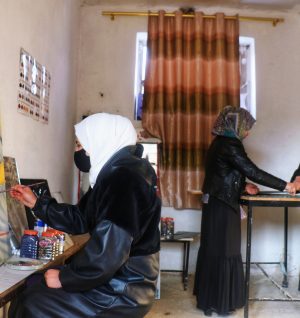
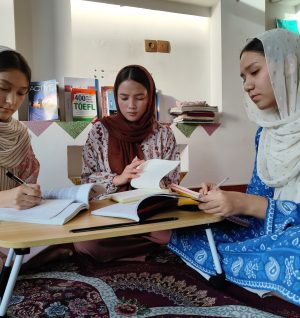
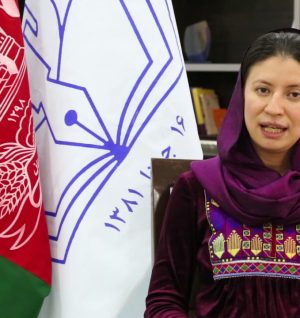

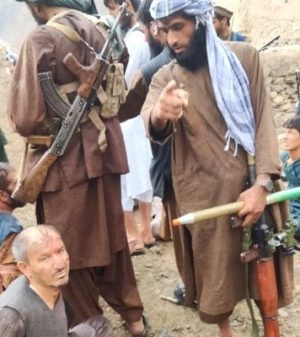
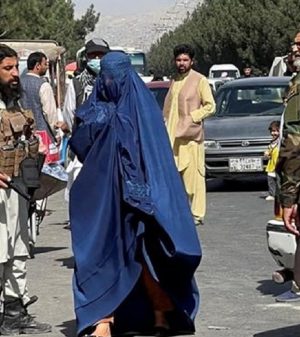
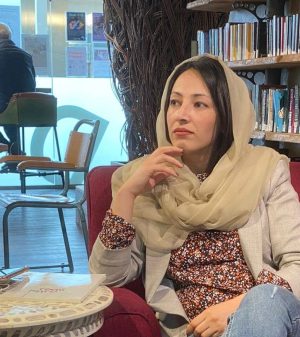
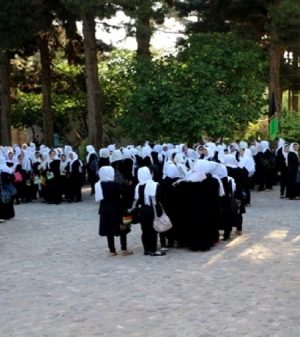
Add Comment